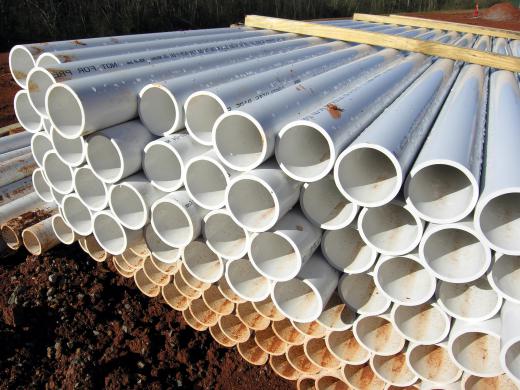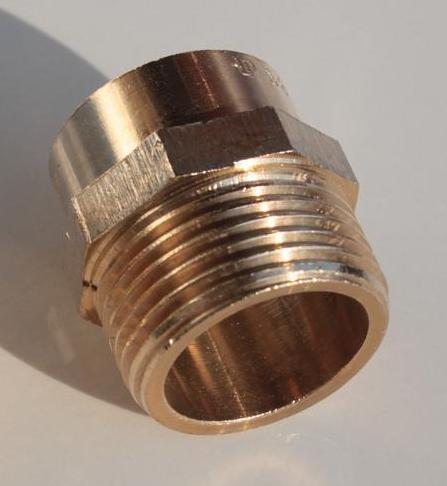A pipe die is a rotary tool used to cut external threads onto various types of tubes or pipes. The die is typically clamped into a thread cutting machine's chuck or into a special handle for hand cutting. Pipe dies are usually available as single piece cassette style tools or half-shell, two piece inserts. A pipe die is open at its center with a series of cutting edges or cutting inserts along its inner surface. The pipe die cuts a thread that is slightly tapered away from the end of the pipe; this eases cutting and ensures a good seal with appropriate fittings.
Pipe dies are used on a variety of different pipe types to cut threads used for joining the pipes or attaching various fittings. Pipe dies are available for most ferrous metal and PVC pipes and most operate on a similar principle. This process involves turning the tool onto the end of the pipe by hand or by means of a powered pipe threading machine. This progressively cuts the thread into the surface of the pipe. As the tool begins to cut, the thread it will effectively advance itself along the pipe with only rotary motion being necessary to complete the cut.

Most pipe dies are generally tubular in shape and designed to lock into the chuck of a pipe threading machine or a specially designed hand operated handle known as a stock. This type of pipe die is usually of one piece construction although split, half-shell designs are also fairly common. The inside surface of the pipe die is equipped with either an integral cutting edge or with separate cutting inserts. Integral cutting heads are made of hardened tool steel while the insert type is generally made of cast steel with removable tool steel cutting bits.

Half-shell varieties are generally square, tool steel dies and are used in adjustable handles for a progressive cut. This is achieved by starting the cut with the two halves of the die adjusted further apart than the final cut depth. Once the initial shallow cut is achieved, the process is repeated with the die closed up to its final cutting depth. Suitable PVC pipe can also be threaded using a pipe die, although the process is a little different. In the case of PVC pipe, a tapered arbor is inserted to prevent the pipe from cracking and to keep the die centered.
A pipe die cuts a thread that is tapered towards the inside of the cut. In other words, the threads away from the the end of the pipe are shallower than those at the end. This serves to make cutting easier, and the tapered thread ensures a better seal. All types of pipe dies require a cutting lubricant to be added to the cut area to further ease the threading process. Great care should also be exercised when cleaning or handling threaded pipes as the threads can be extremely sharp.
